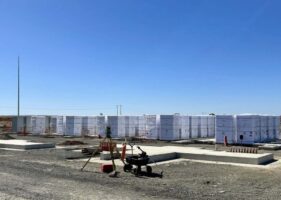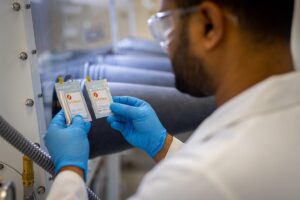Australian flow battery innovator Redflow has landed its biggest contract yet, with a children’s hospital in California, that is being funded as part of a $US325 million ($A505.9 million) US federal government energy storage fund initiative.
The flow battery maker will provide 34.4 megawatt hours (MWh) of zinc-bromine flow batteries, for delivery in late 2025, for a project allowing the Valley Children’s Hospital in Madera, California to switch from diesel generators.
It is Redflow’s biggest project to date.
The hospital is the Central Valley’s only full-service paediatric facility and regularly faces extreme heat conditions, drought, coastal smog, and poor air quality.
The system will need to be able to maintain critical hospital operations during utility outages or shortages, but if an earthquake happens it will need to maintain facility operations for at least 18 hours after a seismic event.
The project is being developed by Faraday Microgrids.
“Our batteries are ideally suited for daily use in the Central Valley’s extreme heat,” says Redflow CEO and managing director Tim Harris.
“We are delighted to see another project from our fast-growing pipeline of opportunities progress forward and ultimately support another community with its transition to renewable energy.”
The final sum the project will receive is yet to be determined, says Nick Carrigan, a strategic advisor with Redflow.
The US Department of Energy (DOE), which will be the main funder of the project via its LDES Funding Opportunity program alongside the hospital and the California Energy Commission (CEC), wants a final figure before allocating funding.
“Redflow is the only battery provider to the project,” Carrigan says.
“Using today’s technology, that would be 172 pods. However we are engaging in constant R&D and evolving the batteries and expect that by the time this is delivered, we will have further efficiencies that may make that a different number.”
Each pod is 200 kWh of energy and there are 20 Redflow batteries in a pod, he told RenewEconomy.
The company has announced 60 MWh of contract wins since June, including the most recent.
The others are a 20MWh energy storage system to back up a solar microgrid that will power the sovereign Paskenta Racheria nation in Northern California – also with Faraday Microgrid as the developer – a 4 MWh battery in Ipswich for Energy Queensland, and a 1.2-1.4 MWh battery for the US Department of Defence.
That volume of work outpaces Redflow’s current manufacturing capacity in Thailand, which it expects to scale up to 42 MWh by the end of this year and 80 MWh by the end of 2024.
Carrigan says options they are looking at include building a new factory in the US or Australia to be close to growing customer bases in both countries, and they are having “active” conversations in both countries.
Survival of the fittest and most persistent
California has a target of 45-55 GW of installed long duration storage by 2045.
The CEC is actively backing four long duration battery companies, with Redflow being one. The others are UK company Invinity, US-listed EOS, and Form Energy, which has an iron-air battery.
Carrigan says the US DOE projects over the weekend show a realisation, in the US at least, that long duration storage is critical in a renewables-powered grid.
“The market is ready for us now and the market is supporting us [via entities like the CEC]. There is a big timing element,” he says.
“The changes in the grid, the supply demand changes in lithium-ion from electric vehicles, and the growing realisation from those that operate grids that you can’t have a renewable-powered grid without long duration energy.”
Redflow has been trying to develop a market for its batteries for over 15 years. Surviving this long to commercialisation means it has more than 270 deployments and 3 million hours of operational data to work with, now the use case of long duration storage is becoming apparent.










